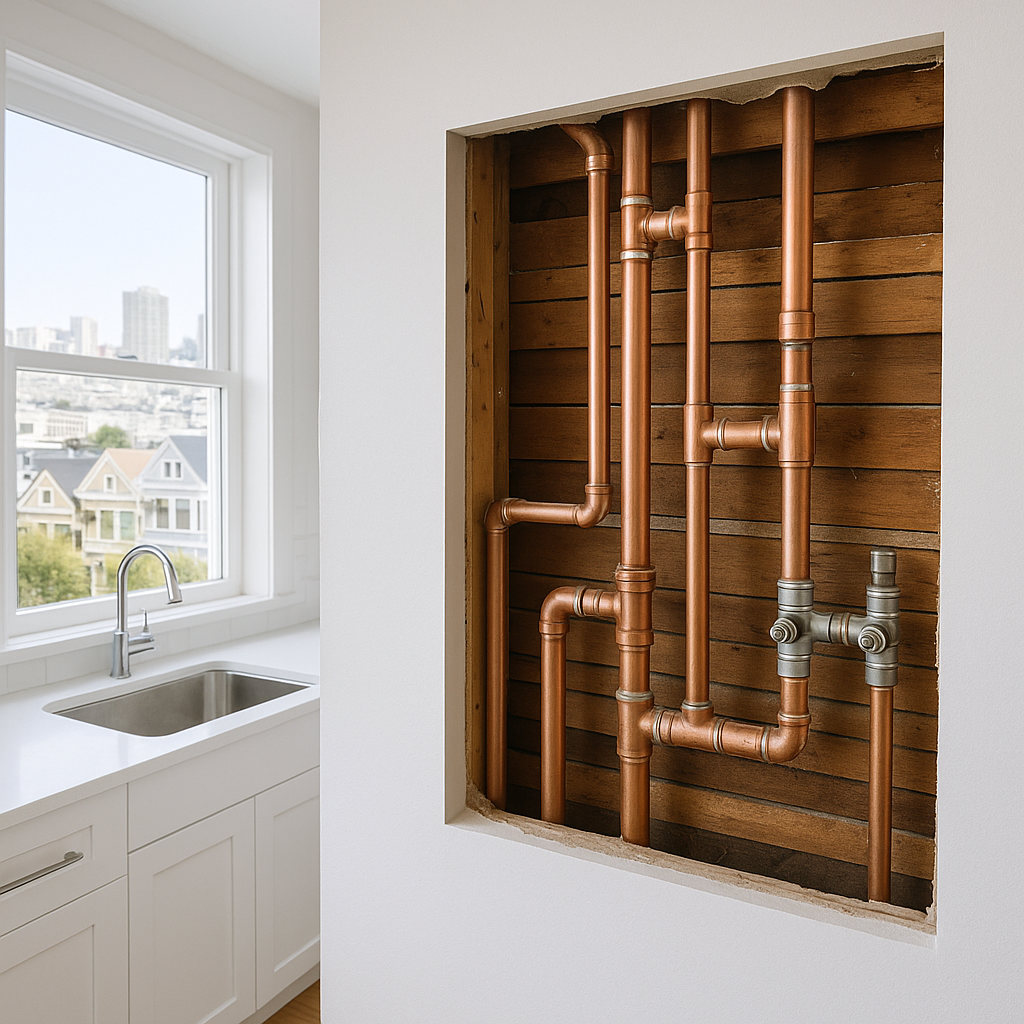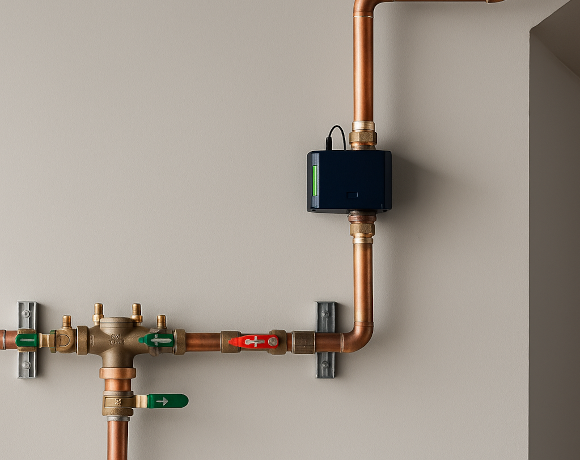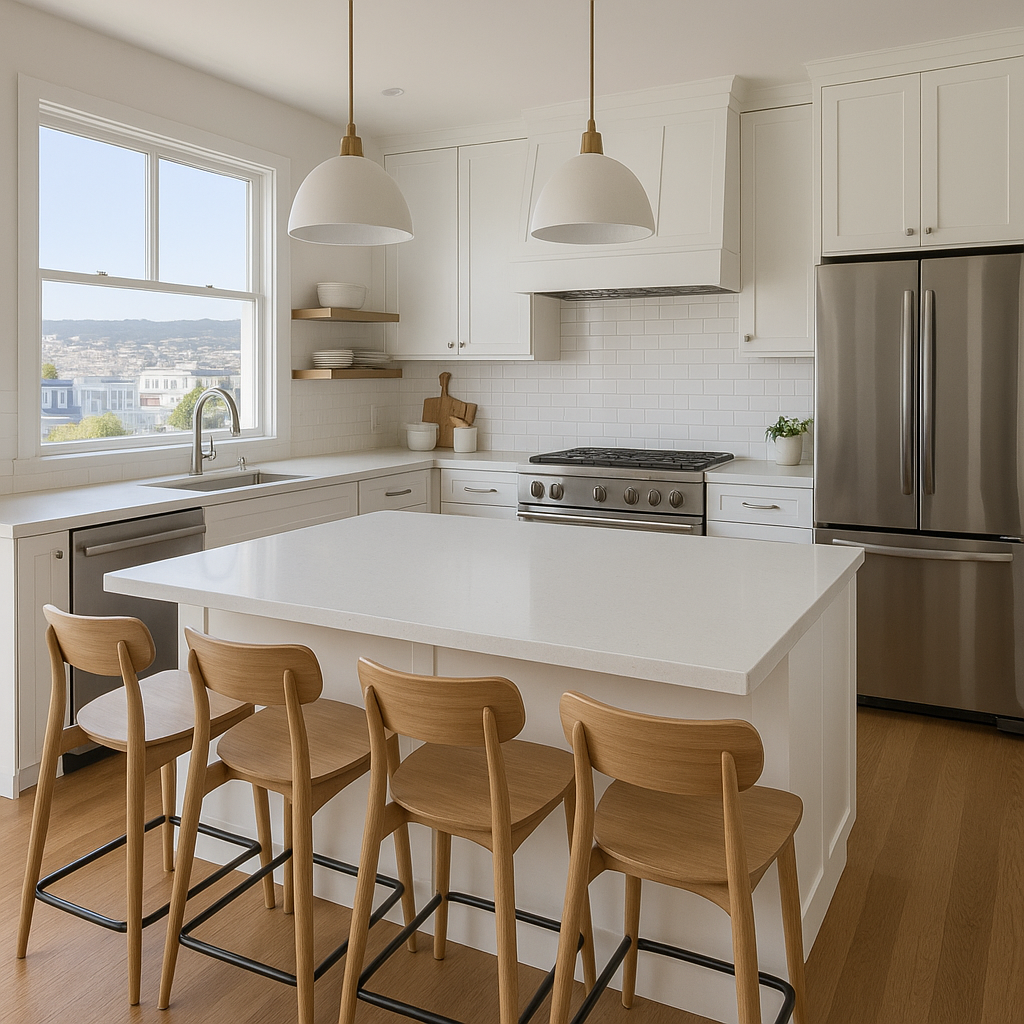Understanding Plumbing & Repiping in San Francisco: A Homeowner’s Guide to Budgeting and Permits
14 November, 2025
Cost-Effective Earthquake Retrofits for Your Marina District Home
Homeowners in San Francisco's Marina District face unique challenges when it comes to earthquake preparedness. With the area's rich history and stunning views, ensuring your home is seismically sound is paramount. This article will guide you through essential budget planning for earthquake retrofits, focusing particularly on the cost trade-offs between moment frames and plywood shear walls at garage openings.
Understanding Earthquake Risks in the Marina District
The Marina District is known for its picturesque views and vibrant community, but its flatlands and proximity to the San Andreas Fault make it susceptible to seismic activity. Homeowners must prioritize earthquake retrofitting to protect their property and loved ones. Recent studies suggest that unretrofitted homes are at high risk of severe damage during significant earthquakes.
Budget Planning for Earthquake Retrofits
When planning for earthquake retrofits, understanding the costs associated with different methods is crucial. The total cost can vary significantly based on the retrofit strategy you choose. Here are some essential factors to consider:
- Permitting Costs: Before starting any retrofit project, check with the San Francisco Department of Building Inspection (DBI) about necessary permits. Costs can range from $200 to several thousand, depending on the complexity and size of your project.
- Material Costs: The materials you choose for retrofitting will greatly influence your final budget. For example, moment frames often require more steel, while plywood shear walls use less expensive wood products.
- Labor Costs: Hiring experienced contractors familiar with local codes and regulations can save you money in the long run. Expect to budget 20-35% of your total costs for labor.
- Return on Investment: Consider the long-term benefits of retrofitting your home. Improved safety can enhance property value and reduce insurance premiums.
Moment Frames vs. Plywood Shear Walls
When it comes to garage openings, the choice between moment frames and plywood shear walls can significantly impact both the budget and structural effectiveness. Understanding the trade-offs is essential for informed decision-making.
Moment Frames
Moment frames consist of a series of beams and columns designed to resist bending and deformation during seismic events. Here’s what you need to know:
- Cost: Moment frames usually have a higher material and installation cost due to the need for steel components.
- Space Efficiency: They allow for more open space in your garage, which can be a significant advantage for homeowners seeking flexibility in layout.
- Structural Performance: They offer superior performance in high seismic zones, making them a reliable choice for Marina District homes.
Plywood Shear Walls
Plywood shear walls are typically less expensive and use wood sheathing to resist lateral forces. Here are some key points:
- Cost: Generally more affordable than moment frames, making them attractive for budget-conscious homeowners.
- Structural Limitations: While effective, they may not provide the same level of performance in very high seismic areas compared to moment frames.
- Installation Complexity: Installation can be quicker and easier, potentially saving on labor costs.
Local Suppliers and Resources
When sourcing materials for your earthquake retrofit, consider local suppliers in the Bay Area to reduce transportation costs and support the community:
- City Mill: A local hardware store chain that provides a variety of construction materials.
- Home Depot: While a larger chain, the San Francisco locations often stock materials needed for retrofitting.
- Local Contractors: Research contractors experienced with seismic retrofits in the Marina District to ensure compliance with local building codes.
Conclusion on Budgeting for Your Retrofit
Investing in earthquake retrofits is not just about compliance; it's about safeguarding your home and family. By understanding the financial implications and trade-offs between moment frames and plywood shear walls, you can make an informed choice that balances cost with safety. Remember to factor in local codes and resources to ensure a successful retrofit project in the Marina District.
FAQs
Q: What are the first steps to plan marina district earthquake retrofits in San Francisco?
A: Define scope/budget, check permitting, and set realistic trade/inspection sequencing.
Q: How long should I expect the work to take?
A: It depends on scope and inspections. Once selections and access are confirmed, we share a clear schedule.
Q: What can I do to control costs?
A: Avoid mid-stream changes, approve long-lead items early, and keep inspection milestones unblocked.

Location
The Richmond District, San Francisco, CA







